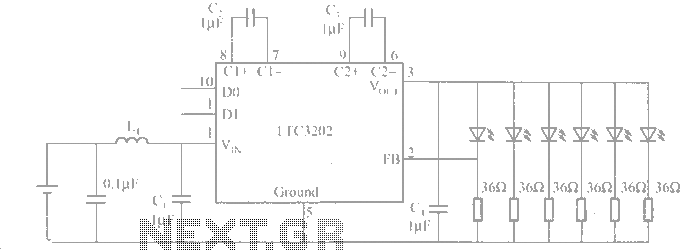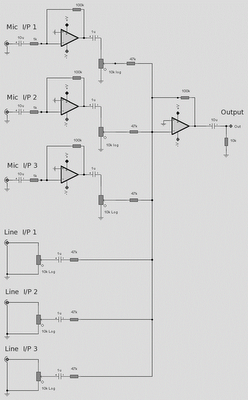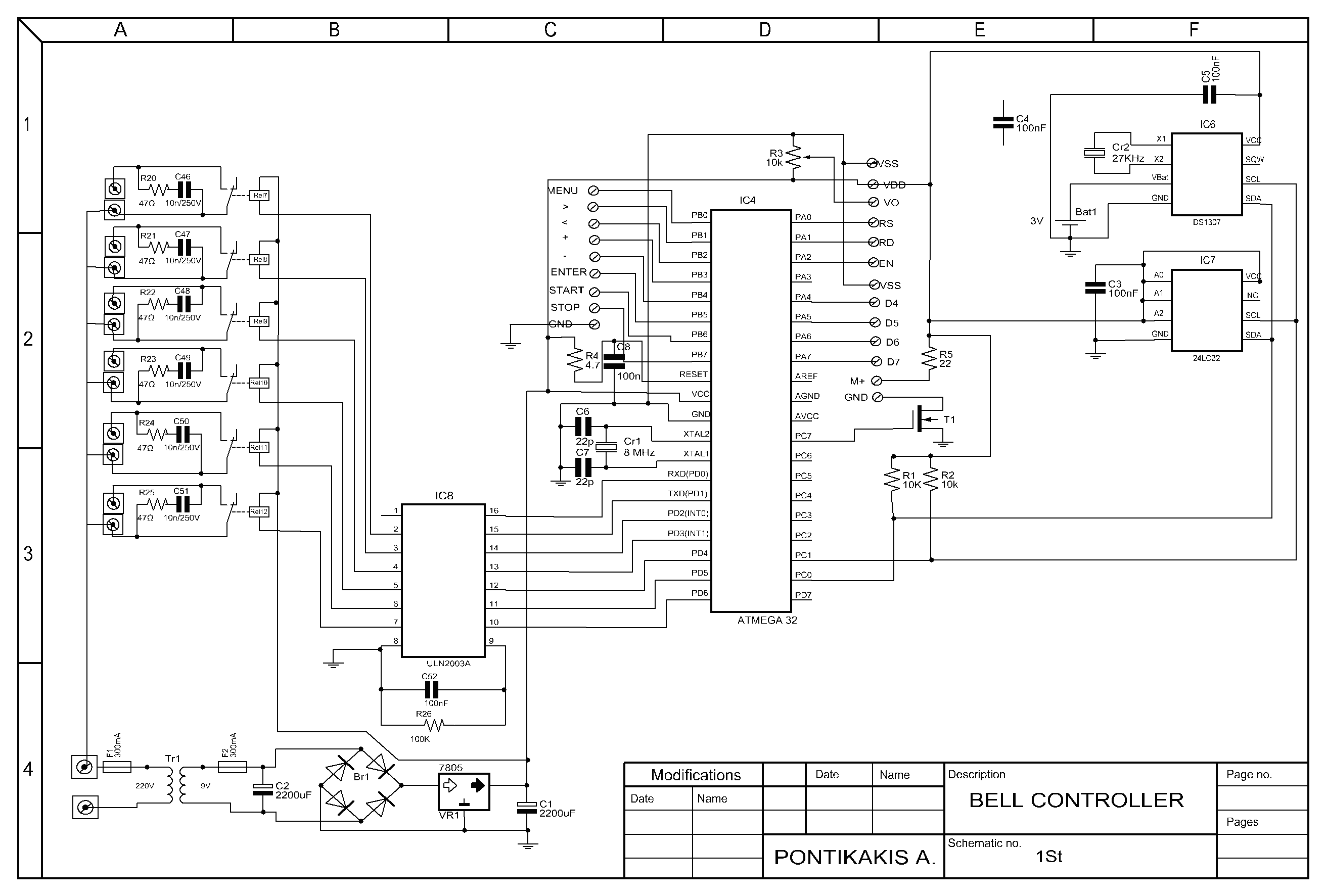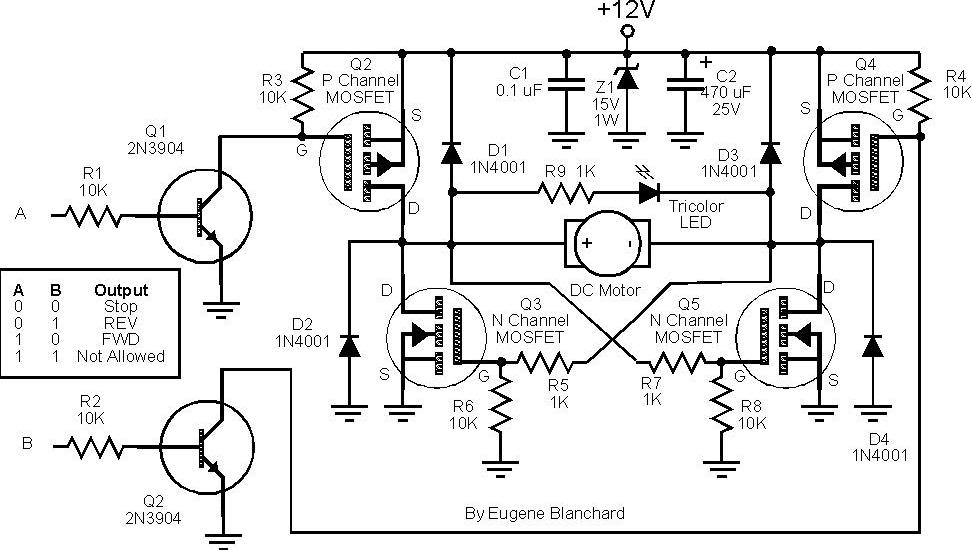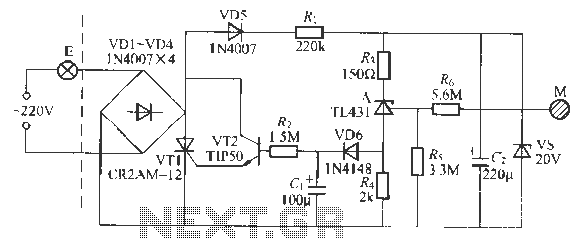
Dynamic braking circuit control thyristor
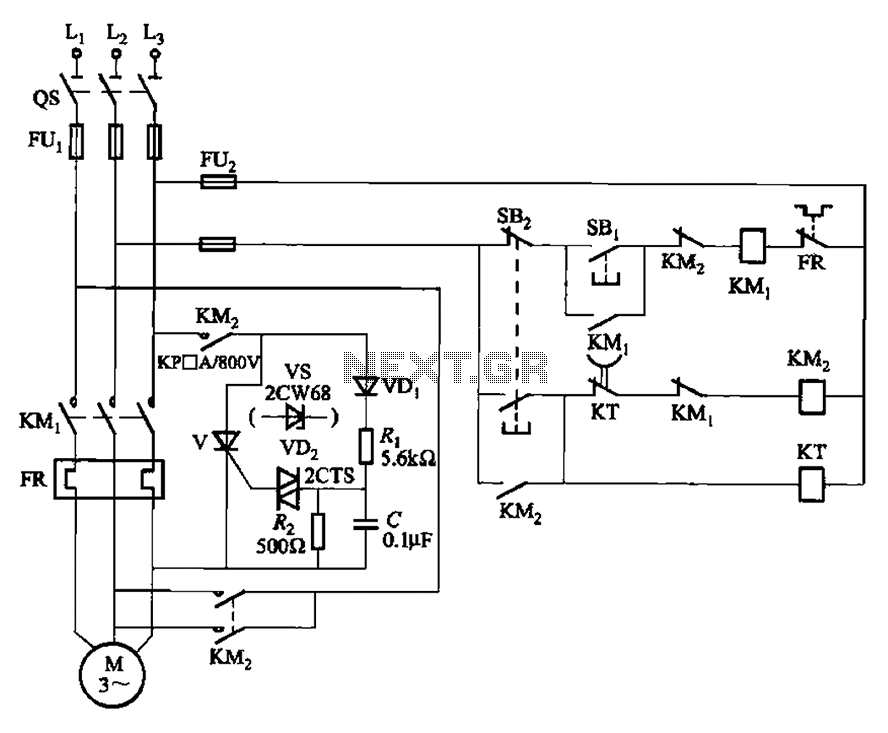
The circuit illustrated in Figure 3-148 eliminates the requirement for a step-down transformer by utilizing a thyristor for brake control in small capacity asynchronous motor braking applications. Upon shutdown, the contactor KM1 releases, while contactor KM2 engages the brake circuit, activating the conduction of thyristor V during the positive half cycle of the power supply. This results in the motor receiving a pulsed DC current for braking, maintaining the motor in a braking state. The braking process continues until the normally closed contact of the time delay relay KT opens, causing the release of contactor KM2 before the braking process concludes.
The circuit operates by integrating a thyristor for effective braking control, which is particularly advantageous in applications involving small capacity asynchronous motors. The design eliminates the need for a step-down transformer, simplifying the circuit and reducing potential losses associated with transformer use.
During operation, when the motor is to be shut down, the contactor KM1 is de-energized, allowing contactor KM2 to energize the brake circuit. This energization triggers the thyristor V, which conducts during the positive half cycle of the AC power supply. The conduction of the thyristor allows pulsed DC current to flow to the motor, creating a braking effect that slows down the motor effectively.
The motor remains in a braking state as long as the thyristor is conducting. The circuit is designed with a time delay relay KT, which plays a crucial role in the braking process. The normally closed (NC) contact of this relay remains closed during the braking operation. Once the predetermined time delay elapses, the relay opens its NC contact, causing contactor KM2 to de-energize and subsequently release the brake circuit. This ensures that the braking process is terminated safely and efficiently, preventing any abrupt cessation that could potentially harm the motor or associated components.
Overall, this thyristor-based braking control circuit provides a reliable and efficient means of controlling the braking of small capacity asynchronous motors, enhancing the operational safety and longevity of the motor system. Circuit shown in Figure 3-148. The circuit eliminates the need for step-down transformer, using thyristor for brake control, for small capacity asynchronous motor braking amoun t. When shut down, the contactor KM] release, KM2 pull the brake circuit to work, triggering the thyristor V conduction (per power supply positive half cycle conduction), the motor continues to give effect pulsed DC current braking, the motor is braking status. Until the time delay relay KT break NC contact is opened, the contactor KM2 release, before the end of the braking process.
The circuit operates by integrating a thyristor for effective braking control, which is particularly advantageous in applications involving small capacity asynchronous motors. The design eliminates the need for a step-down transformer, simplifying the circuit and reducing potential losses associated with transformer use.
During operation, when the motor is to be shut down, the contactor KM1 is de-energized, allowing contactor KM2 to energize the brake circuit. This energization triggers the thyristor V, which conducts during the positive half cycle of the AC power supply. The conduction of the thyristor allows pulsed DC current to flow to the motor, creating a braking effect that slows down the motor effectively.
The motor remains in a braking state as long as the thyristor is conducting. The circuit is designed with a time delay relay KT, which plays a crucial role in the braking process. The normally closed (NC) contact of this relay remains closed during the braking operation. Once the predetermined time delay elapses, the relay opens its NC contact, causing contactor KM2 to de-energize and subsequently release the brake circuit. This ensures that the braking process is terminated safely and efficiently, preventing any abrupt cessation that could potentially harm the motor or associated components.
Overall, this thyristor-based braking control circuit provides a reliable and efficient means of controlling the braking of small capacity asynchronous motors, enhancing the operational safety and longevity of the motor system. Circuit shown in Figure 3-148. The circuit eliminates the need for step-down transformer, using thyristor for brake control, for small capacity asynchronous motor braking amoun t. When shut down, the contactor KM] release, KM2 pull the brake circuit to work, triggering the thyristor V conduction (per power supply positive half cycle conduction), the motor continues to give effect pulsed DC current braking, the motor is braking status. Until the time delay relay KT break NC contact is opened, the contactor KM2 release, before the end of the braking process.
Warning: include(partials/cookie-banner.php): Failed to open stream: Permission denied in /var/www/html/nextgr/view-circuit.php on line 713
Warning: include(): Failed opening 'partials/cookie-banner.php' for inclusion (include_path='.:/usr/share/php') in /var/www/html/nextgr/view-circuit.php on line 713

